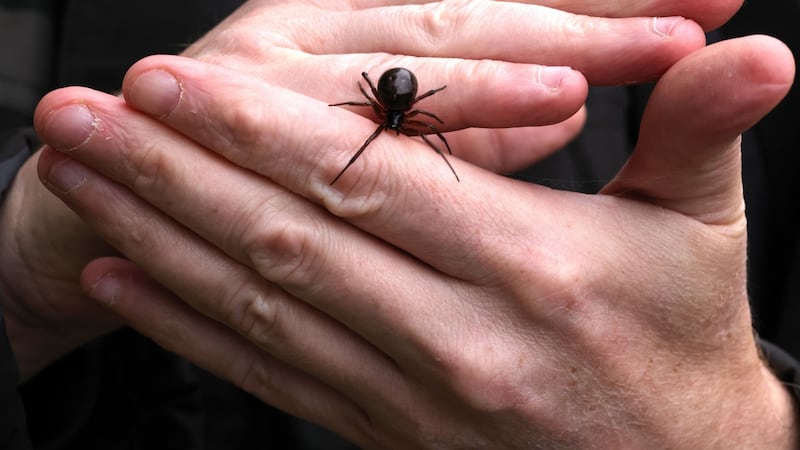There will be a significant population of false widow spiders in every county in Ireland within the next two decades, according to new research from NUI Galway.
Researchers at NUI Galway have delved into how rapidly growing colonies of false widow spiders in urban Ireland are affecting natural habitats. Their research is the first venom study of its kind in the world.
Originally discovered here in 1999, the noble false widow – steatoda nobilis – has been reproducing at a significant rate, prompting questions as to how it might affect native spider species and humans.
In recent years up to a dozen specialist researchers at the Venom Systems and Proteomics Lab at NUI Galway's School of Natural Sciences have been collecting specimens and data.
"We're living in a time where we've got huge concerns about climate change, we've got insect decline and now it appears that we have this global invasive spider," said researcher Dr John Dunbar.
“What we need to do is to start monitoring it and to assess whether it is having a negative impact on native species. Spiders are really important in the ecosystem; they are keystone species and we don’t want to mess with that.”

The team collected 550 false widow spiders in Lucan, Co Dublin. Most had about half their potential venom load, but it is unclear what a full dose would do to a humans.
Hospitalisation
Some rare cases have led to hospitalisation. The spider’s predatory behaviour after venom extraction was found to be more selective, and they often hid away to replenish.
False widow venom affects the three native species most in contact with it – the European giant house spider, the missing sector orb weaver and the lace web spider.
The false widow venom is significantly more potent. With results due in the coming months, an experiment allowed the various spiders to establish webs before artificial barriers between them were removed.
Researchers were then able to see what happened: “In every single incidence the false widow had killed and wrapped up the other spider and eaten them,” Dr Dunbar said.
The aim of the experiments is to observe how both the spiders’ venom and behaviour would affect other native species and draw informed conclusions on the overall impact on the Irish environment.
“The fact that this spider has more highly potent venom and is more active throughout the year and can out reproduce them as well, it’s really efficient in tackling other spiders,” Dr Dunbar said.
“There is no doubt that within the next 20 years we are going to have a significant population in every county in Ireland.”













